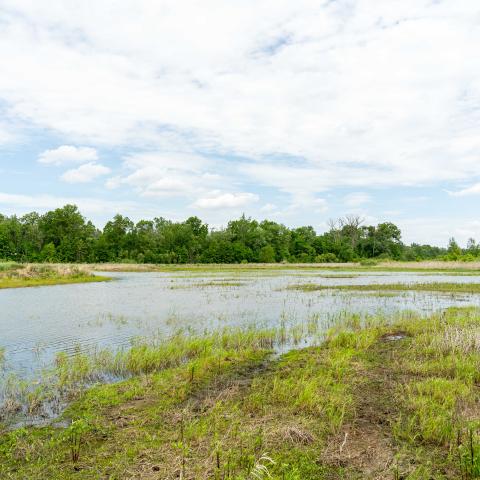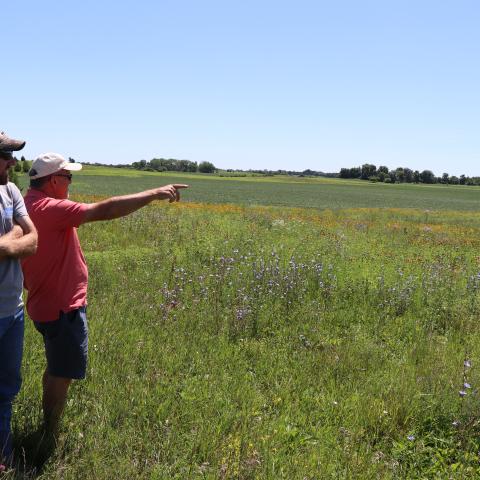A New Kind of “Absentee” Landowner

Conservationists come in different shapes and sizes. This one from Illinois is a bit of an oddity. He’s a retired banker who currently lives in the Chicago suburb, Naperville. He’s a landowner but not a farmer. What is most amazing is how much time and energy this suburbanite spends on his farms.
Conservationists come in different shapes and sizes. This one from Illinois is a bit of an oddity. He’s a retired banker who currently lives in the Chicago suburb, Naperville. He’s a landowner but not a farmer. What is most amazing is how much time and energy this suburbanite spends on his three farms. His name is Arthur “Art” Jablonski and he’s managed to set himself up to an established farm family in east-central Illinois. By working together, they are building something that is profitable, sustainable, beautiful, and according to Art, fun!
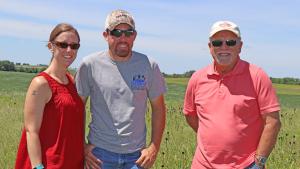
When you hear the term “absentee landowner,” most people envision someone who doesn’t come to the farm very often-or ever. Think again. That is definitely NOT Art Jablonski.\
Megan Dassow, a former technical specialist from USDA’s Natural Resources Conservation Service (NRCS) worked with Art for several years. She’s married to John Dassow, who farms for Art, manages his rolling acres as premium wildlife habitat, and grows row crops on the flat ground in Ford and Livingston Counties.
Art drives down to the farm twice a week or more. He is very much an active decision-maker and a partner in what goes on here. In fact, the Dassows say they need a new name for landowners like Art because he is neither ‘absent’ or disengaged.
According to the Dassows, Jablonski is very much involved. He is eager, open, and passionate about trying new things. One look in his truck bed confirms just how involved he is. Art rolls up his sleeves and puts on tall boots to help get the job done. What does he love best about farming? Conservation.
When asked just where his love of agriculture, farm life, and natural resources comes from, he says his college days. He studied finance and business at Northwest Missouri State College and his roommate was from a farm close by. They visited the farm regularly on weekends and holidays. This exposed Art to small towns, rural life, the miracles of soil, livestock, chores, hard work, good families, and good food. Art enjoyed the joys and benefits of country living, even though his career and family eventually took him in a completely different direction.
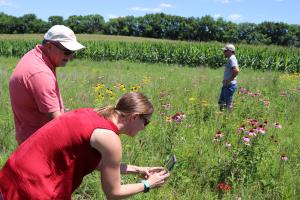
Twenty years later, Art had a friend who was the Mayor of Chatsworth. He owned land in Ford County and took him to a local land auction held in an American Legion hall. That’s when Art made a bid and won it. In 1999, he bought his first piece of land and was soon introduced to neighbor Duane Dassow. That first farm was 80 acres of mostly tillable land with marginal, poorly drained soils and a rolling topography.
But Art had a plan—no, a vision. He knew he’d eventually retire and have time to invest in that land. Art wanted to farm that ground AND return parts of it to the prairie it used to be. Make no mistake about it—he was always more interested in restoring the prairie than he was about growing corn or beans.
“It’s just beautiful to come out here and see how we have absolutely transformed the land on these farms. I love visiting these acres and seeing all the different plants and grasses that are taking over. It’s fascinating,” says Art.
Today, Jablonski owns a total of 200 acres. The three farms, in Ford and Livingston Counties, are sloped and rolling. Some is classified as Highly Erodible Land, or HEL.
Operator John Dassow convinced Art that planting row crops on HEL acres was not only risky and difficult, it was not profitable.
“If you add up my production costs, labor, and time invested, it just doesn’t pencil out,” Dassow told him. “I showed Art the numbers and said we should take those acres out of production and restore them to quality wildlife habitat. John said that was exactly what he was looking for.”
As a sixth generation farmer, John Dassow knew how to farm and is passionate about conservation. He learned the importance of conservation from his father, Duane. Duane initially introduced Art to USDA and NRCS, explaining to him about conservation programs and incentives that would improve the quality and profitability of his farm. John has since kept up with all USDA and NRCS programs, letting Art know when opportunities arise to implement more conservation on his farm.
Dassow Farms operates around 1,300 acres of cropland and 450 acres of CRP, with a small portion owned by the family and the rest owned by five different landowners. John says most of his landowners are conservation-minded, but not quite like Art. “One day I asked if he was interested in creating a wetland and he jumped right on it. Art is always eager to try something new and to take risks,” Dassow explains.
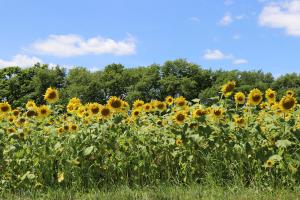
John’s Dad built the first 1.5 acre wetland in 2007. Both are located in Ford County’s poorly drained soils—land previously covered in drainage tile because a long time ago it used to be a wetland.
All wetland conservation work has been conducted through USDA’s Conservation Reserve Program, known as CRP. Art also planted trees, grassed waterways, windbreaks, filter strips, food plots, and more. In addition, John signed up for NRCS’s Conservation Stewardship Program (CSP) to access more conservation options, financial incentives, and technical assistance to improve the land even more.
Dassow enrolled all the land he farms into CSP. He receives financial assistance to plant new cover crop species and mixes and to use enhanced fertilizer efficiency products.
Art’s two sons were positively impacted by farming activities they’ve been exposed to over the years. Youngest son Dan majored in biology at Eastern Illinois University and holds a Master’s degree from Southern Illinois University in Environmental Science. He is presently employed as a Wetlands Scientist with V3 Companies. Dan’s technical knowledge and interests, together with Art’s passion, let them both play intricate roles in maintaining the prairies and ecological habitat they’ve created.
Art and Dan purchased and planted a diverse native plant community to mimic a natural ecosystem based on evolving site conditions on the three farm’s CRP acres. 158 are native species. Many were hand-planted with plugs in order to establish precise plant communities on the land; however, many natives regenerated naturally. To date, they have cataloged 173 total species, 158 are native to the area.
While driving to the Dassow operation and Jablonski’s farms, it is easy to see that prairie restoration on rolling acres is a popular local choice. Field corn and soybean fields are plentiful, but so are native flowers and tall grasses, dragonflies and butterflies.
The diverse selection of birds, pheasants, Monarch butterflies, and even wild turkeys continues to expand. The bigger wetland, with its 6-acre water feature, was just completed in December 2017. Newly-seeded plants are already coming up. It won’t be long before waterfowl and herons call the spot home.
Remember, soils in this area are not great. Most are poorly drained with many eroded hillsides. The toughest challenge when restoring a wetland is finding and removing disabling all drainage tile. Initially, the first wetland project didn’t hold water. ‘Rogue’ tiles were still at work—even if intermittently—draining the wetland dry. “I finally found and disabled all tile and now she’s holding water beautifully,” says John.
Jablonski is proud to show off his prairie and wetland landscapes. He visits often to ensure all is well and inspects fields to see if weeds or invasive species are taking over. He keeps herbicides, tall boots, gloves, and other management tools in his truck to help John and Dan manage these sites. That’s not something many non-operator landlords ever think about doing.
“I enjoy visiting the prairie sites, seeing all the plants, and getting them what they need,” says Art. Art confirms he is “totally committed to long-term goals. I have a clear vision of what I want to create here. My problem is I tend to be impatient to see it all unfold. John is helping me out there too.”
Besides prairie and wetland acres, all Art’s fields are farmed using no-till/strip-till. John uses cover crops to keep a living root on soils all year. These two will continue to work together to restore and improve the land. Both men are true conservationists who have left a legacy on the land.


